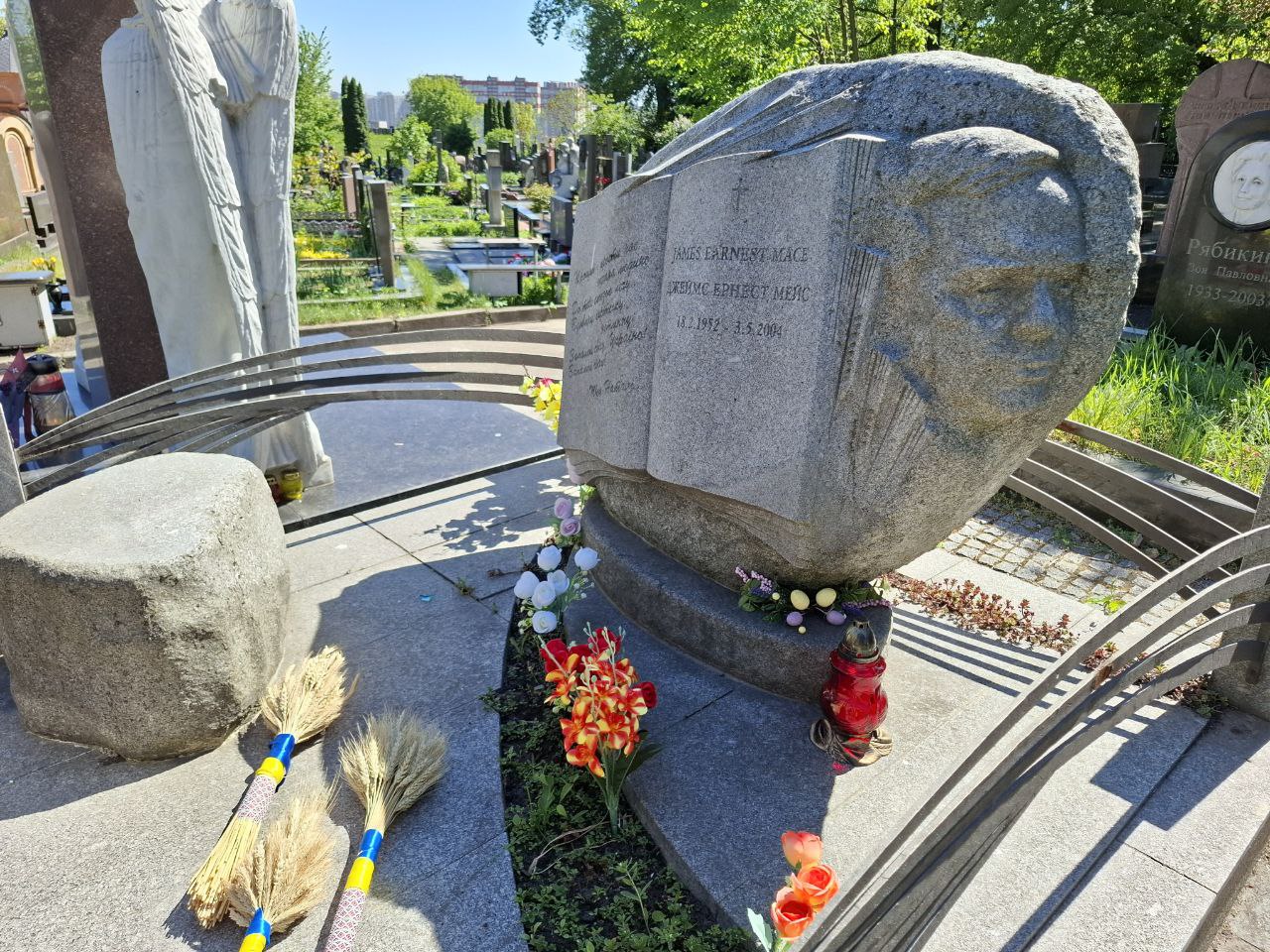Museum staff commemorated James Mace at his grave
21 years ago, American historian and researcher of the Holodomor in Ukraine, James Mace, passed away. Employees of the Holodomor Museum visited the researcher’s grave at the Baikove Cemetery and honoured his memory by laying symbolic compositions of ears of grain and lighting lamps.
James Mace, although not of Ukrainian origin, played a key role in the study of the tragic pages of Ukrainian history. In the mid-1980s, he headed a special commission of the US Congress, which was engaged in collecting archival materials and eyewitness accounts of the events of 1932–1933 in Ukraine. In 1982, during a scientific event in Israel, Mace was among the first scholars to publicly state that the Holodomor was an act of genocide. Later, in 1993, he moved to Ukraine, where he was engaged in teaching, scientific, journalistic and public activities. It was he who initiated the annual commemoration of the Holodomor victims by lighting a candle of memory in the windows of houses.
James Mace wrote that his move to Ukraine was prompted, in part, by a sense of great shame when he learned that the United States had officially recognised the USSR in 1933, when “millions of Ukrainian peasants were starving before the eyes of the whole world.” He justified his tireless work as follows: “I want to atone for the enormous guilt of the American people towards the Ukrainian people.”
On May 3, 2004, James Mace passed away. The scholar’s life ended at the age of 52. His path was not long, but it was deeply connected with Ukraine. The image of the researcher is immortalised in a symbolic tombstone by Volodymyr Koren: the sculpture depicts him as a meteor that burst into the Ukrainian intellectual field with lightning speed, flashed brightly and faded away, leaving behind a noticeable trace. This trace is his ideas, research and work, embodied in the image of an open book.
With respect and gratitude, we remember his work and contribution to the history of Ukraine. Eternal memory…
